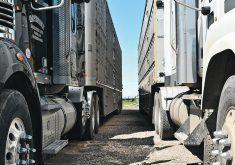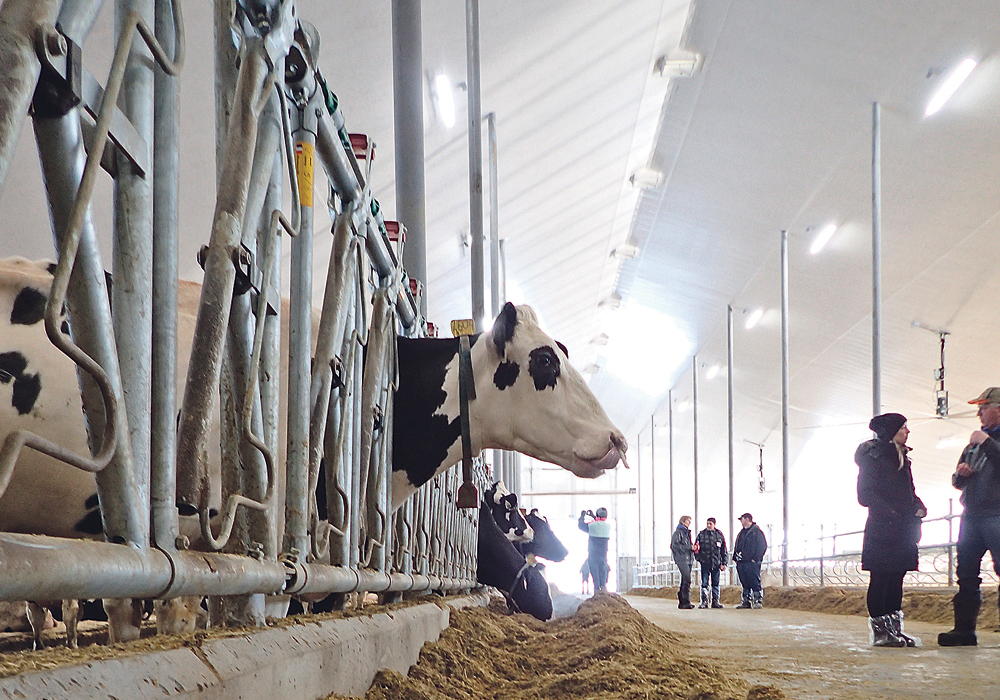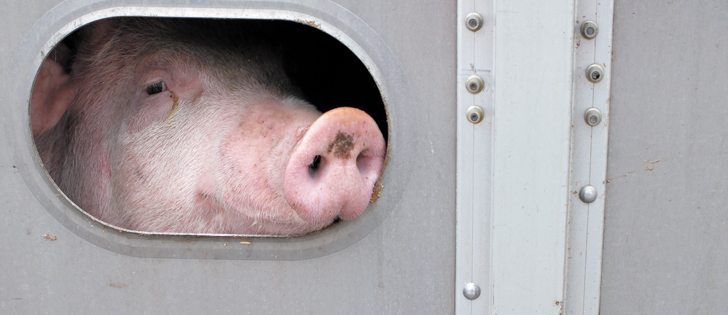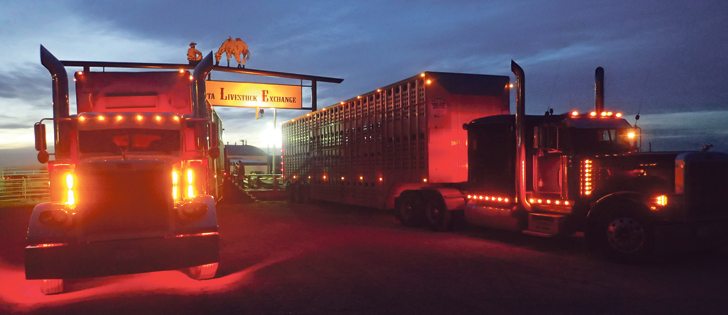Long distances to plants and delays in timely culling by farmers are blamed for problems; nine-point plan developed
OTTAWA — Management of cull dairy cows must be improved, according to a study undertaken by PhD student Yanne Jane Stojkov of the University of British Columbia.
About 350,000 dairy cows a year are designated for slaughter in Canada, and some of them face long journeys to processing plants despite having health issues including lameness and mastitis.
Long distances to plants and producer delays in timely culling are among the reasons, Stojkov told those attending a Nov. 29 National Farmed Animal Health and Welfare Council meeting.
His findings led the council to develop nine points that experts agreed would improve management of cull dairy cows. They also prepared a formal statement that has yet to be made public.
Read Also

Pork sector targets sustainability
Manitoba Pork has a new guiding document, entitled Building a Sustainable Future, outlining its sustainability goals for the years to come.
Among those points is a need for producers and herd veterinarians to know the potential transport times and delays that cows could face on their way to processing plants.
In his research, Stojkov found many farmers lacked that information.
“When they’re reaching their culling decisions, they might assume that (the cows) will be sent to a slaughter plant nearby, not subjected to long duration transport,” he said.
For example, dairy cows in Newfoundland can be sold to plants in Ontario, requiring hours of travel that might include both truck and ferry, unloading for food and water and reloading. Once in Ontario, the journey may not be over.
“The lucky ones might be slaughtered there, but the journey might continue all the way to the U.S.,” said Stojkov.
In British Columbia, about 22,000 dairy cows a year are culled and sent to one of two auction markets. Fewer than half will be slaughtered in B.C. Instead, they will be trucked over the Rockies to Alberta. Some may be processed there, but others continue their journey to U.S. plants.
Stojkov said there is no good information available to farmers on potential delays in cow slaughter.
“The consensus … was that communication is needed to make producers and herd veterinarians aware of the potential long travel distances and … take this into account when reaching culling decisions.”
A large part of the problem lies with a shortage of available and proximate slaughter plants. Some plants will not accept cull dairy cattle. Canadian Food Inspection Agency data indicates that about 30 beef processing plants operate in Canada, compared to 400 in 1976.
Delays in slaughter can compromise cow health and worsen any problems the animals had at the outset. Stojkov provided U.S. statistics indicating that 30 to 40 percent of cull dairy cows in that country are emaciated when they reach packing plants and 40 to 50 percent are lame.
He said producers should involve herd veterinarians in their decisions on when to cull. Regulations ban the transport of downer animals, which cannot walk due to health conditions.
Options for managing compromised animals that are not classified as downers vary by province.
“It’s more difficult to assess these cows, and that’s why a more complex approach needs to be adopted to resolve this question,” Stojkov said in an interview.
“Some cows might have health problems or issues if assessed by one vet, inspector, person or farmer or transporter, and some others might not agree with that. So it gets into those nuances. We need to develop it and make it more uniform.”
Emergency slaughter is available in some regions, and mobile slaughter plants are an option in others. Each has its advantages and disadvantages, said Stojkov.
As well, frequency of inspection and enforcement of animal welfare regulations also vary by province.
This is a summary of the nine points on cull dairy cow management as agreed by a panel of experts:
- More research is needed to “better characterize cull cow management and movement from farm to slaughter and the factors that lead to long delays before slaughter.”
- Producers and herd veterinarians must be made aware of potential for long travel distances and delays so they can consider it when making cull decisions.
- Information on the benefits of early culling should be given to producers and veterinarians. Early culling should be part of every herd health program so that “proactive culling of non-compromised animals becomes the norm.”
- Animal condition and potential delay to slaughter should be part of the culling decision process, and veterinarians should be active in determining cows’ fitness for transport. People involved in transport need to be trained to recognize and handle compromised animals, including information on whether to load them.
- Efforts must be made to identify more local options for cull dairy cow slaughter so short transport and timely slaughter becomes the norm.
- Options must be investigated on management of compromised animals, such as direct-to-slaughter programs, on-farm emergency slaughter and mobile slaughter plants.
- All dairy farms and auctions should have training and tools for prompt, effective euthanasia of cows or access to those services.
- Enforcement of rules on animal welfare must be examined with the goal of widespread adoption of best management practices and possibly inter-jurisdictional sharing of information on non-compliance.
- Canadian authorities should negotiate with U.S. counterparts to allow age verification through health records so cull cows don’t need to go through chutes and increase their risk of injury.
barb.glen@producer.com
















